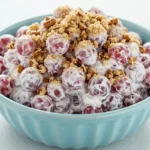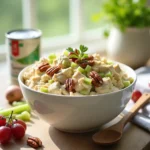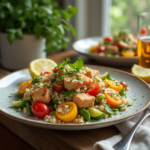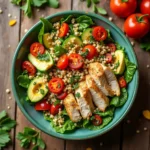Introduction
I remember the first time I tasted that signature waffle cut potato slice. It was a bustling afternoon at a local fast food spot, and the line stretched clear around the building. The aroma was irresistible. I waited, eagerly anticipating my first bite. The moment I crunched into those waffle fries, I knew I’d found something special. They had this crisp, fluffy texture that made every bite worth savoring. Later, I discovered that crafting them at home was possible with the right technique. My kitchen soon became a place where the sizzling sound of hot oil and the smell of fresh potatoes combined into a new favorite ritual. Friends started asking for my secret, and I’d smile, proud to share my method. Over time, I mastered my own chick fil a waffle fries recipe, which now ranks as a family favorite. There’s a certain joy in transforming simple potatoes into something so delightfully different. Each ridged slice holds more flavor, and the golden color reminds me of those nostalgic days waiting in line. This story sets the stage for a new journey into crispy waffle fries, straight from your own kitchen. I hope you savor every crunchy bite to come.
Table of Contents
Key Benefits
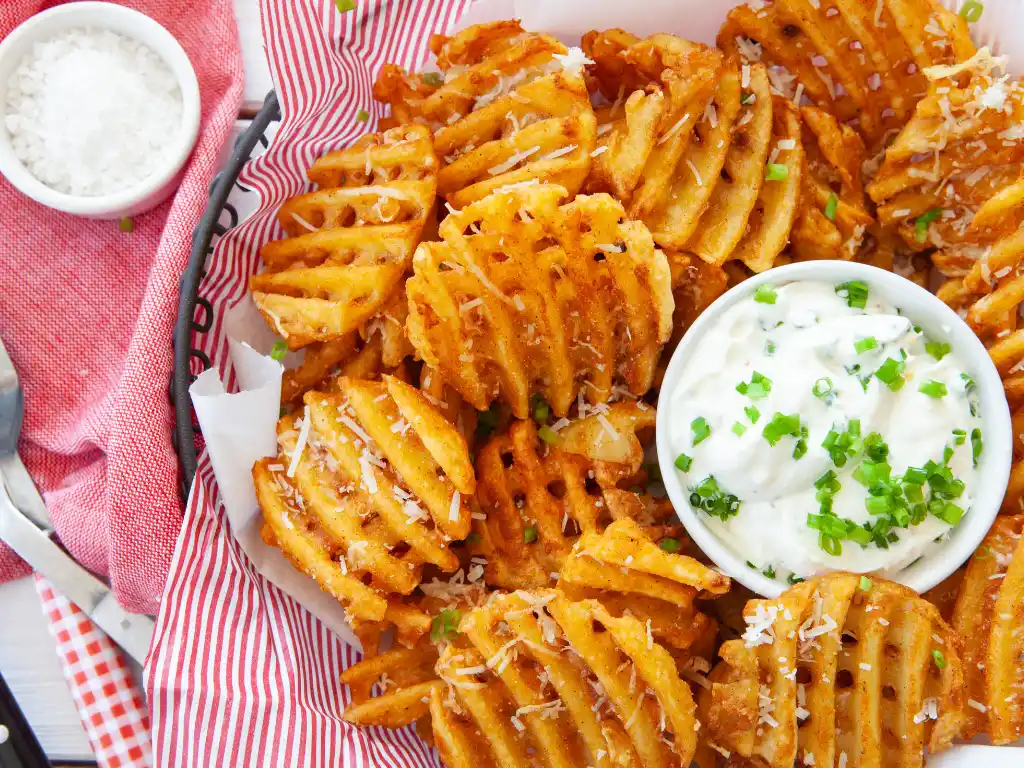
Easy Preparation
One major advantage is simplicity. You don’t have to be a professional cook to master homemade waffle fries. All you need is a cutting tool (like a mandolin cutter or a mandoline), some quality potatoes, and oil to fry them. It’s straightforward, yet you gain the ability to customize thickness, seasoning, and cooking times.
Crisp Exterior
Nothing beats that crispy bite. Achieving a crunchy surface is more than possible with this chick-fil-a waffle potato fries approach. The holes in the fries result from the unique waffle cut. This design maximizes surface area, which allows the fry to brown more evenly. In turn, you get that perfect texture many people crave.
Familiar Flavor at Home
Chick-fil-a’s waffle fries have a specific taste that many of us appreciate. By learning to prepare them yourself, you get to enjoy a comforting, restaurant-inspired dish. Plus, you can choose your preferred seasoning blend. You can even try to replicate that signature salted flavor if that’s your goal. It’s like bringing a piece of chick-fil-a right into your own kitchen.
Control over Ingredients
Many commercial fries include additives, but by making waffle fries yourself, you can decide which ingredients to use. You have the power to avoid unwanted components or adapt the recipe to your nutritional preferences. You can choose between different oils, add extra seasoning, or skip certain elements altogether.
Fun for All Ages
Kids and adults alike tend to love these patterned slices. The waffle shape adds novelty, making dinner time more interesting. Because these fries hold dips and sauces especially well, they’re a huge hit at parties and family gatherings.
Allergy-Friendly Option
Some fries from fast food spots can pick up cross-contamination from cooking surfaces that handle other items. At home, you can ensure that your cooking process doesn’t contain any of the nine major allergens. By controlling ingredients, you lower the risk for those who need caution around the nine major allergens or other items in the kitchen.
Ingredients
Gather these ingredients before you begin. That way, you’ll have everything on hand for a smooth cooking session.
- Potatoes (2-3 large spuds)
- Russet potatoes often work best. Choose fresh, firm ones.
- Each spud should be free from bruises or spots.
- Oil for Frying (1-2 quarts of vegetable oil)
- You can use peanut or canola oil if you prefer.
- Vegetable oil is a common choice for many home cooks.
- Salt (to taste)
- Use a fine-grain salt or a seasoning salt blend.
- Optional Seasonings
- Black pepper, garlic powder, paprika, or a dash of onion powder.
- Equipment
- Mandolin or mandoline: Vital if you want uniform potato slices.
- Paper towels: Use them to drain on paper towels after cooking.
- Deep fryer (or skillet, or air fryer).
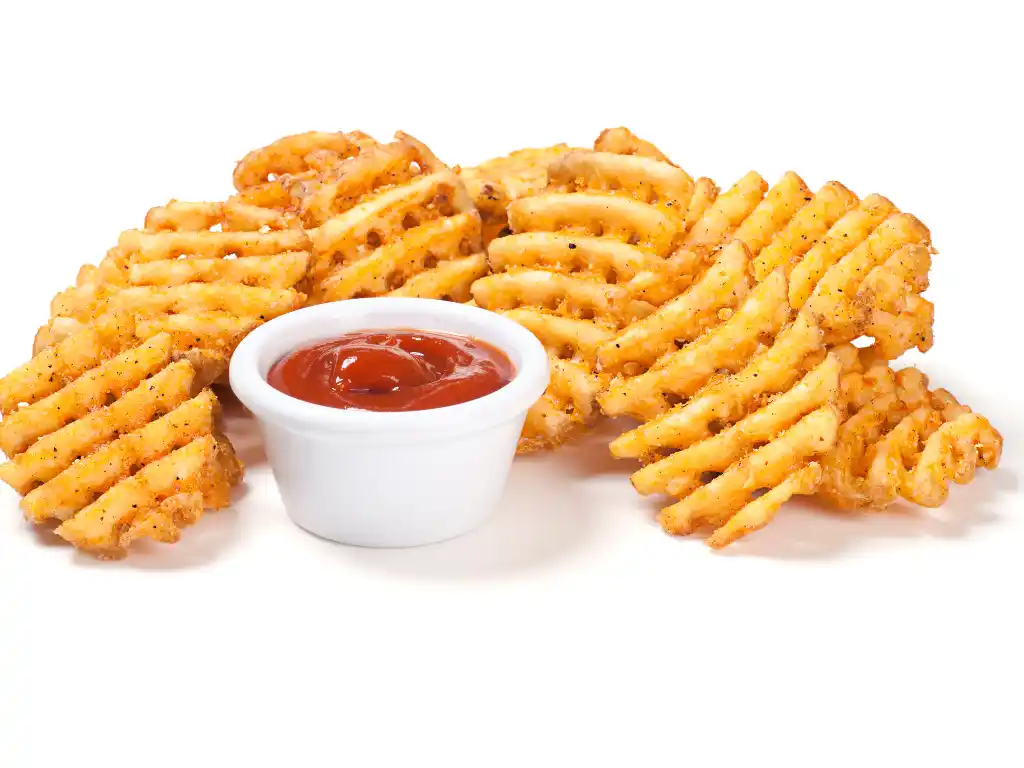
By selecting simple ingredients, you keep the taste fresh and the cooking process simple. Also, pay attention if you want to avoid certain allergens or keep track of dietary specifics. This recipe does not inherently contain any of the nine common allergens, unless you choose to add a seasoning blend that does. Double-check packages to remain safe.
Instructions
Step 1: Prepare Your Potatoes
- Wash each potato under a stream of cold water to clear away surface grime.
- Using a mandoline or mandolin, slice your potatoes to achieve the waffle pattern. Aim for about 1/8-inch thickness.
- Create the waffle texture by turning 90 degrees between passes on the blade. Slide the potato over the blade, rotate it 90 degrees after each slice, and repeat. This technique yields the signature shape for chick-fil-a’s fries.
Step 2: Soak and Rinse
- After you cut fries into waffle shapes, place them in a large bowl of cold water.
- Swish them around to remove excess starch and prevent them from sticking together.
- Change the water once or twice if you see it getting cloudy. That step ensures you get rid of excess starch, which helps the fries become crispier later.
Step 3: Optional Parboiling
- Some cooks like to parboil the potato slices for 2 to 3 minutes. This quick boil softens them slightly, so they cook more evenly in hot oil.
- If you do this step, place them immediately in cold water after parboiling to halt the cooking.
Step 4: Dry the Potatoes Thoroughly
- Pat the potatoes with paper towels to remove as much moisture as possible. You want to prevent oil splatters during frying. A dry surface also helps the fries achieve that perfect golden brown color.
Step 5: Heat the Oil
- If you’re using a deep fryer, follow the manufacturer’s instructions to heat your oil to about 350°F (175°C).
- If you use a heavy skillet, add enough oil to submerge the fries about halfway, then heat on medium-high until a drop of water lightly sizzles.
- Alternatively, if you prefer an air fryer, preheat it to about 375°F (190°C). Spritz the slices with cooking spray or lightly brush with oil.
Step 6: Fry the Potatoes
- Careful not to overcrowd the fryer or skillet. Too many slices at once lowers the oil temperature and leads to soggy fries.
- Fry in small batches for about 3-4 minutes or until the potatoes are done and they turn a lovely golden hue.
- For an air fryer, lay them in a single layer and cook for roughly 10-12 minutes, flipping halfway through. They’ll develop a crispy surface similar to a deep-fried batch.
Step 7: Drain and Season
- Once they turn golden brown, drain on paper towels to remove excess oil.
- Immediately season them with salt or your chosen spice blend while they’re still hot.
Step 8: Serve Warm
- Place your finished waffle fries on a platter and serve. If you follow these steps, you’ll be rewarded with a chick-fil-a waffle fries recipe that’s reminiscent of the original.
At this point, you’ll notice the unique shape, crisp exterior, and soft interior. You’ve essentially created your own waffle chips from fresh potatoes. This approach ensures a pleasant bite, making these fries the perfect side for sandwiches, burgers, or any meal you want to enhance with a bit of crunchy goodness.
Pro Tips and Variations
Use Fresh Potatoes
A key factor in producing a crispy result is using fresh potatoes rather than frozen fries. While some folks might want a shortcut with premade options, fresh potatoes let you tailor thickness and achieve that signature look.
Adjust Seasonings
Feel free to experiment. Common seasonings for waffle fries include garlic powder, paprika, black pepper, or even a dash of chili powder. If you want that classic fast-food flavor, keep it simple with salt.
Try Different Tools
- Using a mandoline is the top choice for a uniform waffle pattern. However, if you prefer a manual method, you might find a specialized waffle cutter.
- A standard crinkle-cutter blade also works, but you’ll need to remember to rotate the potato carefully (around potato 90 degrees between each pass).
Alter the Cooking Method
- Air fryer: This is a great way to lower your oil consumption. Preheat, add your potatoes in a single layer, and cook to your liking.
- Traditional fryer: Delivers a similar texture to chick-fil-a’s. Just keep an eye on temperature.
Use a Drying Step
To get a crispier finish, some cooks toss the sliced potatoes with a small amount of pea starch or cornstarch before frying. This extra coating can give them a delightful crunch. Make sure to remove all water from the surface so the starch adheres well.
Thicker vs. Thinner Cuts
For a softer interior, slice them slightly thicker. Thinner cuts tend to get extra crunchy. Try both approaches to see which you prefer.
Seasonal Twists
During the colder months, consider adding rosemary, thyme, or other herbs. You can also drizzle these fries with a bit of melted cheese sauce or top them with chopped bacon for a heartier side dish.
Note on Allergen Safety
Because you’re making these at home, you can decide how to handle cooking surfaces, potential cross-contact, and seasonings. This meal doesn’t inherently feature any of the major allergens, so it’s easy to keep it safe for different dietary needs.
Serving Suggestions
These waffle fries pair well with a variety of main courses. They can transform a plain meal into a more enticing plate. Here are a few ideas:
- Classic Burger and Fries
Enjoy these fries with a juicy burger at home. The extra ridges on your waffle slices make for a hearty side. - Sandwiches and Wraps
Offer a crispy side to a chicken or veggie wrap. That extra crunch can amplify the overall meal satisfaction. - Toppings and Dips
- Serve with ketchup, ranch, aioli, honey mustard, or barbecue sauce.
- For cheese-lovers, drizzle melted cheddar on top.
- Party Platter
Use them as a base for loaded waffle fries. Sprinkle with cheese, diced tomatoes, jalapeños, and a dollop of sour cream. People often line up for loaded fries at social events, and these are no exception.
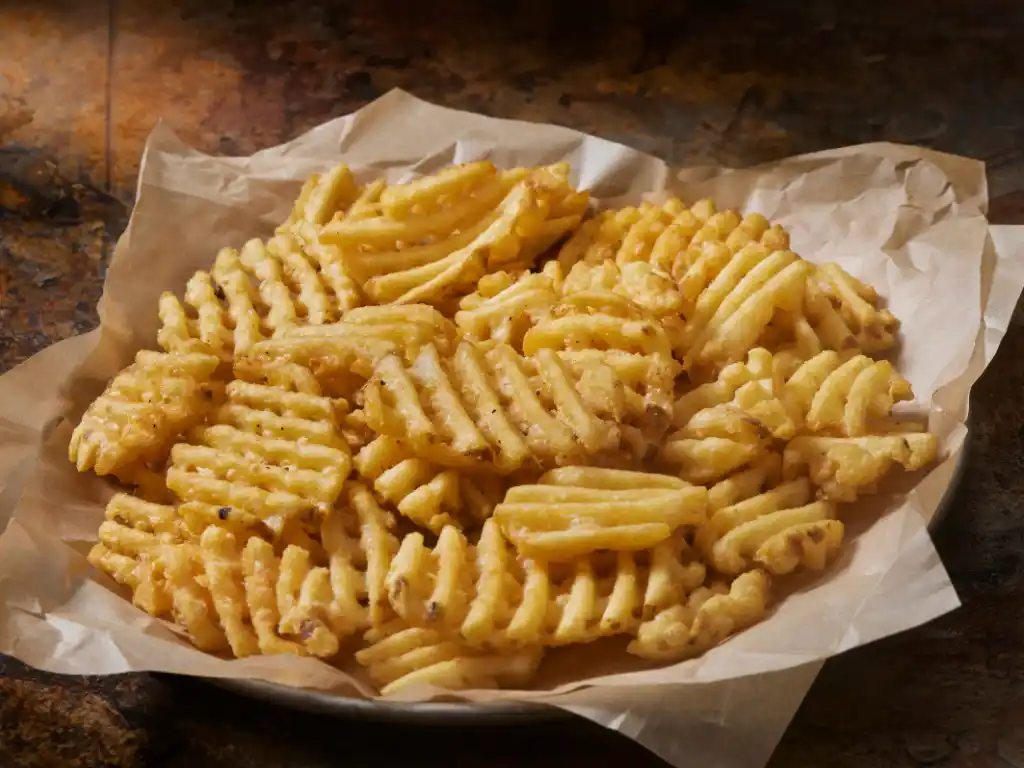
No matter how you serve them, these fries often stand out as the highlight of the meal. They differ from ordinary fries because of the many surfaces that hold sauce and seasoning.
Conclusion
We all know chick-fil-a fans love that signature ridged potato slice. This copycat approach lets you enjoy that flavor at your own table. Our goal was to show you how to craft a copycat chick-fil-a waffle fries recipe without fuss. By following the steps and tips we outlined, you can replicate that crunchy texture and soft center. You also have the freedom to add custom seasoning or adapt the cooking method.
Whether you’ve tried to make chick-fil-a waffle fries before or it’s your first attempt, this guide provides clear steps. You’ll be able to serve a batch of fresh fries that taste amazing, look inviting, and hold up to dips. There’s also satisfaction in knowing you can do it more affordably from home. This approach yields a consistent outcome, allowing you to share these popular fries with friends and family.
Beyond flavor, these waffle fries can fit into various meal plans. They don’t contain any of the nine most common allergens unless your chosen oil or seasoning does. By controlling the cooking process, you’ll deliver a safe and delicious option for everyone at the table.
So, if you’ve ever wondered how chick-fil-a’s waffle fries got so popular, here’s your chance to experience that delight in your kitchen. It’s worth every step, from slicing to frying. Once you take that first bite, you’ll appreciate the care you invested in cutting your potatoes. Dig in and enjoy.
FAQs
How does Chick-fil-A make their waffle fries?
Chick-fil-a slices fresh potatoes using a ridged cutter, rotating them to create the signature waffle pattern. They then fry the slices until they’re golden and crispy on the outside. A light sprinkle of salt often completes that classic flavor. While the exact process may have small differences in each location, this is the general approach. In our recipe, we made a slight adjustment by choosing to soak and dry the slices before cooking. This helps them crisp up nicely.
Why is Chick-fil-A getting rid of their waffle fries?
There has been talk about changes, but chick-fil-a continues to serve the fries many people enjoy. If you’ve heard rumors, they might refer to certain menu updates. Some fast-food places often switch up offerings or test new products. However, fans continue to express how much they love our waffle potato fries, so it’s unlikely they’re fully disappearing anytime soon. In fact, it’s common for restaurants to experiment with their sides. If chick-fil-a changed anything, it might just be a test in select markets. That said, you can now recreate chick-fil-a’s fries at home with this recipe.
Why do Chick-fil-A fries taste different?
Their fries have a unique shape and texture that sets them apart from typical shoestring or curly fries. These chick-fil-a waffle potato fries have ridges and holes in the fries, which means they get an even fry and hold more seasoning. Also, the company uses certain oil and salting procedures. They recently made a slight adjustment to our waffle cooking times, based on feedback about crispness. This ensures a consistent texture that people recognize. By following our instructions, you can capture much of that taste in your own kitchen.

